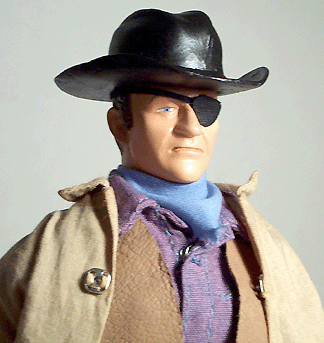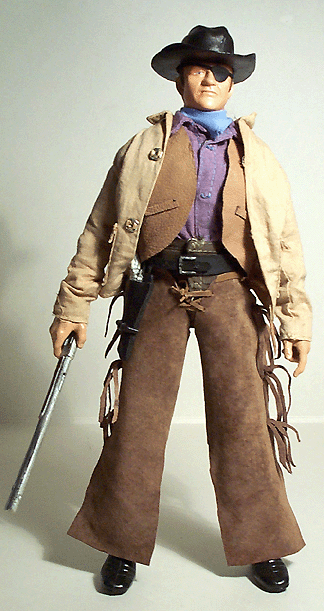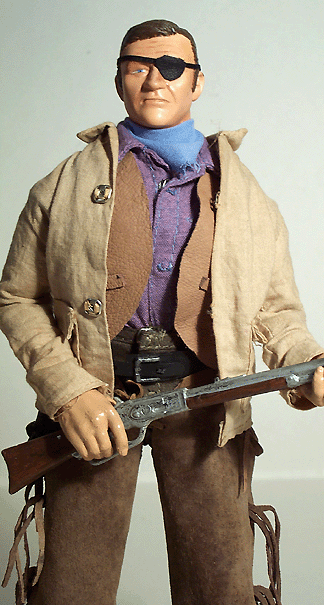
His
father Clyde was a pharmacist with a lung condition which
required him to move wife Mary and son Marion to the warmer
climate of southern California where they tried ranching near
the Mojave desert. Till the ranch failed he and his younger
brother Robert swam in an irrigation ditch and rode a horse
to school. Next the family moved to Glendale where Marion
delivered medicines for his father, sold newspapers, and had
an Airedale dog named "Duke" (the source of his own nickname).
He did well at school
both academically and in football. When he narrowly failed
admission to Annapolis he went to USC on a football scholarship
1925-7. Tom Mix got him a summer job as a prop man in exchange
for football tickets. On the set he became close friends with
director John Ford for whom, among others, he began doing
bit parts, some billed as John Wayne. His first featured film
was Men Without Women (1930).

After more than 70
low-budget adventures, mostly oaters, Ford cast him in Stagecoach
(1939), the movie through which he emerged as a major star.
He appeared nearly 250 movies, many of epic proportions. From
1942-3 he was in a radio series "The Three Sheets to the Wind"
and in 1944 he helped found the Motion Picture Alliance for
the Preservation of American Ideals, later becoming its president.
His right-wing political stance was also reflected in Alamo,
which he produced, directed and starred in. His superhawk
stand was enshrined in Green Berets, which he co-directed
and starred in. In 1963 he had a cancerous lung removed; in
1978 there was open-heart surgery; in 1979 his stomach was
removed.

He received the Best
Actor nomination for Sands of Iwo Jima (1949) and the Oscar
for his role as Rooster Cogburn in True Grit (1969). A Congressional
Medal was struck in his honor. He is perhaps best remembered
for his parts in the cavalry trilogy -- Fort Apache (1948),
She Wore a Yellow Ribbon (1949) and Rio Grande (1950).
Interesting fact about
John Wayne:
- He stood 6 foot
4 inches tall.
|